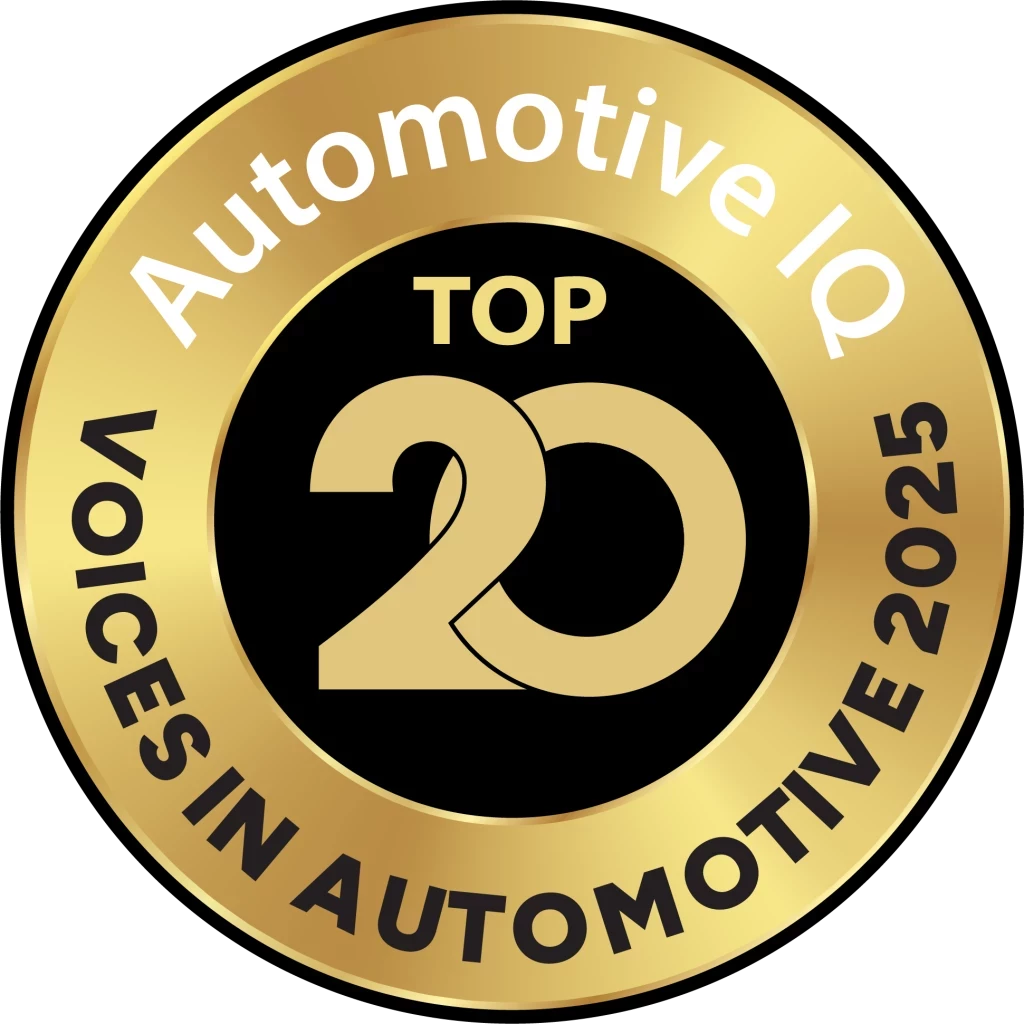Electric Charging - Now and the Future
Add bookmarkSwitch on your TV, thumb through a newspaper, or trawl the web, and you could be forgiven for thinking that we are about to enter a gilded age of electrification – a world where the petrol powered vehicle is being phased out.
Wherever you look the airwaves and column inches talk of tipping points, of game-changing moments that are bringing the electric vehicle revolution ever closer.
Take Nissan for instance. Earlier this year, Edward Jones, the Japanese OEMs EV Manager for Great Britain, said that he believed that “the tipping point for mass EV uptake is upon us”.
Nissan, which has sold 75,000 EVs in Europe and 260,000 EVs globally, has reason to be optimistic, but does its prediction tally with hard data?
One man who knows better than most is Iain Mowat. Mowat, a senior Oil Demand analyst from Wood Mackenzie and an expert on energy infrastructure development, believes that the electric car revolution that Nissan in forecasting is still some way off.
Says Mowat, “Although sales of all electric vehicles (AEVs) and plug-in hybrids (PHEVs) have grown quickly in recent years, they still represent only a small portion of passenger vehicle sales across the world.”
“Sales amounted to roughly 525,000 in 2015 and were concentrated in the US, Europe, China and Japan. With global sales of light vehicles near 85 million, the EV/PHEV share was only 0.8 %. Even in China where sales tripled in 2015, their share remained below 1 % of total passenger cars,” he continues.
But with the Tesla Model S, now the best-selling AEV in the world, the traditional OEMs are keen to gain a foothold in this market. Take Jaguar Land Rover for example. In November in the UK, its CEO Ralf Speth unveiled an ambitious plan to create 10,000 new jobs in the UK by building an EV factory and another site which would produce batteries.
Following Speth’s announcement, the British government declared electrification in the automotive arena “an emblematic area of focus”.
Just as well – because Speth’s exciting vision came with a number of challenging provisos attached. First and foremost was a guarantee from the UK government that it would invest heavily in Britain’s ailing energy infrastructure.
In the UK, there are signs that in preparing for this brave new world, the nettle has been grasped. Ninety-eight percent of UK motorway service stations have charging stations installed.
If you needed further convincing, Nissan has predicted that by 2020 the number of public EV charging stations in the UK will exceed the number of petrol stations.
So just how many forecourts are there in the UK? Currently, according to James Haigh, a business consultant for Experian Catalist, there are 8,459 forecourts.
However, Nissan forecasts that there will be approximately 7,900 EV public charging points in three years’ time.
Nissan’s projection does not apply to mainland Europe, where fuel stations continue to dominate. According to Wood Mackenzie, there are 130,000 petrol stations and only 20,000 EV charging stations.
So will charging infrastructure overtake petrol fuel courts by 2020?
Mowat explains, “There are currently more than 98,000 public charging points in Europe, with national networks ranging from only 22 in Bulgaria to nearly 25,000 in the Netherlands. In 2014, the European commission estimated that one public charging point per 10 cars is required in addition to private chargers. Based on this assumption and our base case EV forecast, Europe would need 66,000 new EV charging points by 2020 – mainly in the largest European power markets. Uncertainty over regulation and business models is a drag on charger deployment and could impede EV uptake. Additionally, investment is not only required in charging points, but also in supporting distribution infrastructure."
What about the US?
“There are major challenges in America, too”, says Scott Kelley, a post-doctoral research fellow at the University of Michigan Energy Institute who has spent his career specialising in Sustainable Energy and Transportation Systems.
Kelley, who co-wrote a paper entitled ‘An Approach for the Optimal Planning of Electric Vehicle Infrastructure for Highway Corridors in 2013, says “The United States also face hurdles when it comes to implementing charging infrastructure,” he begins. “Currently, there are only 14,898 fully operating electric charging stations and 38,360 charging outlets in the USA."
In 2012, while working with a Phoenix-based company providing electric vehicle charging networks, Kelley began to realize the true extent of the challenge America faced.
“As part of the American Recovery and Reinvestment Act, the US Department of Energy funded The EV Project, which aimed to provide a network of both private and public charging in states across the country. A few companies involved in the initial stages flourished, but most floundered. Now spool forward to the present day, and you have a mish-mash of companies who are operating without a clear national strategy, co-ordination or communication.
Kelley continues, “However, that said, where the state has actively participated and driven electrification, it has blossomed. Take California for example. There have been executive orders (namely order B-16-2002) issued from the Governor’s office to establish benchmarks to increase zero-emission vehicles on the state’s roads, and the State offers subsidies to help increase EV take-up – the most successful being the ‘California Air Resources Board’s Clean Vehicle Rebate Project.’ This has necessitated infrastructure development to accommodate charging demand. It is also launching fast charging schemes including the DRIVEtheARC program, which comprises of 50 rapid DC charging points installed at key locations in the northern half of California.”
Batteries stay a pain point
Over 5,000 miles away in Bristol, a city in the west of England, Dr. Ben Lane, a leading automotive expert who has studied ultra-low emission and electric vehicle technologies for the last 20 years, believes that the greatest hurdle is not the charging infrastructure itself, but advances in battery development.
Says Dr. Lane, “A key game-changer would be a further reduction in battery production costs. As batteries become cheaper, OEMs can ensure that the battery packs of tomorrow deliver more range, which will put less pressure on the need to expand Europe’s existing charging networks.”
But there is a long way to go. Take a recent body of research compiled by the Idaho National Laboratory for example, where scientists compared the most fuel efficient gasoline powered vehicles to their EV counterparts. The results made for interesting reading.
Says Jim Francfort, the Advanced Vehicles Program Manager at the Idaho National Laboratory (INL), “Using the model year 2014 Tesla Model S with the 85 kWh traction battery pack, the EPA estimated range is 265 miles. We tested the vehicle on a closed test track at different speeds and we got a fairly broad range of test results. At 45 mph, the range was 366.4 miles per charge, at 60 mph the range was 280.3 miles per charge, and at 70 mph the range was 228.1 miles per charge.”
The INL also compared its test results for the 2015 Chevrolet Spark to publicly available information for the 2015 Dodge Dart, a car running on conventional fuel.
Francfort adds, “While we found that EVs are about 85% to 90% efficient, the Dodge Dart’s fuel tank holds about 25.5 times more energy (469 kWh vs. 18.4 kWh) than the Chevrolet Spark’s BEV traction battery pack.
“Using the EPA’s MPG data, a Dart with a full tank of petrol could travel approximately 383 miles before needing to re-fuel. In contrast the all-electric Chevy Bolt had a maximum range of 283 miles according to the EPA - highlighting parity between the two, at least in terms of range, is still some way off.”
The network will need a standard
Back in the UK, Dr. Ben Lane, who founded Zap-Map, a leading UK EV mapping point service, thinks that “standardization is an issue which the charging industry needs to comprehensively tackle with in order to move forward”.
“The electrification landscape can be quite confusing for motorists thinking of buying an EV,” he admits. “In the UK alone, there are three widely used connector standards for AC including 3-pin, Type 1 and Type 2 connectors and another three for rapid chargers – the Japanese CHAdeMO system, which Nissan Leaf users will be familiar with, the European Combined Charging system (CCS), which is used widely in continental Europe, and also the Tesla supercharging connectors.”
Lane, who believes that rapid charging speeds will significantly increase from 50 kW to at least 300 kW in the next 20 years, says,
“However, maintaining multiple standards, while not ideal, will not create an enormous barrier from a cost or user perspective. That said, if in the future OEMs were to create additional charging standards it could be problematic for the industry. Hopefully, the latest EU directive should start to stabilise the number of standards in use, with Type 2 and CCS likely winners for the European mass-market in the longer-term.”
It is a view shared by Stephen Doyle, who heads Ricardo’s Hybrid & Electronic Systems Group. But does Doyle, who also worked for Lotus Engineering for twenty years, eight of which were spearheading its electric and hybrid vehicle integration programs, believe that AC will prevail over DC or vice versa in twenty years’ time?
Says Doyle, “It’s not really a question of pitting AC against DC. Instead the debate should really be focused on how quickly super charging infrastructure will be developed and how far it will be pushed. However, higher power rapid AC/DC charging stations are more expensive to install, requiring a higher capacity infrastructure than their lower power AC counterpart. While nobody quite knows what the charging networks will look like in 2036, there will certainly be a clamour amongst the public for many more rapid charging units and the ultrafast charging units currently being developed (150-350 kW).”
Doyle continues, “the 50 kW and 120 kW rapid DC chargers available today can deliver a 50 to 80 % charge in 30 minutes for those EVs developed to take advantage of this technology, but the difference in two decades’ time will be that both the infrastructure and the battery cell chemistry will have developed to such a level that a less than 20-minute charge will provide EVs with the same range as conventionally powered cars.”
Cooperation is key
But if this exciting vision of the future is to become reality, those responsible for charging infrastructure will need to work alongside battery manufacturers thinks, Dr Allan Paterson, Chief Electrochemist for Johnson Matthey Battery Systems – one of Europe’s largest independent automotive battery developers.
“The main players in the industry need to develop a symbiotic relationship for electrification infrastructure to truly flourish,” he says. “Current DC fast chargers are limited by a number of factors including the current charging infrastructure. Future cell chemistries may significantly improve pack charge capabilities and enable faster charges, but they need to be matched by equivalent improvement in the charging systems and infrastructure to be able to determine how fast indeed fast will be.”
Paterson and his colleagues, who recently relocated to Milton Keynes to be closer to “key automotive customers in the Midlands” such as Jaguar Land Rover and Rolls Royce, continues,
“In the next few years the CCS rapid charging system, for example, may increase its charging speed by five-fold to around 350 kW. That’s unlikely to present an issue if the battery being charged is a 150 to 180 kW battery. But if it is a much smaller battery pack – say around 30 kWh. In short, superchargers will only work if the battery management system has been suitably developed, and the chemistries being used are thermally stable and have the power capability to accept this phenomenally high charge without damaging cycle life.”
A fine balance indeed. But a tipping point? Only time will tell…
Interested in learning more? Read the second article of our series here and part three here!




















